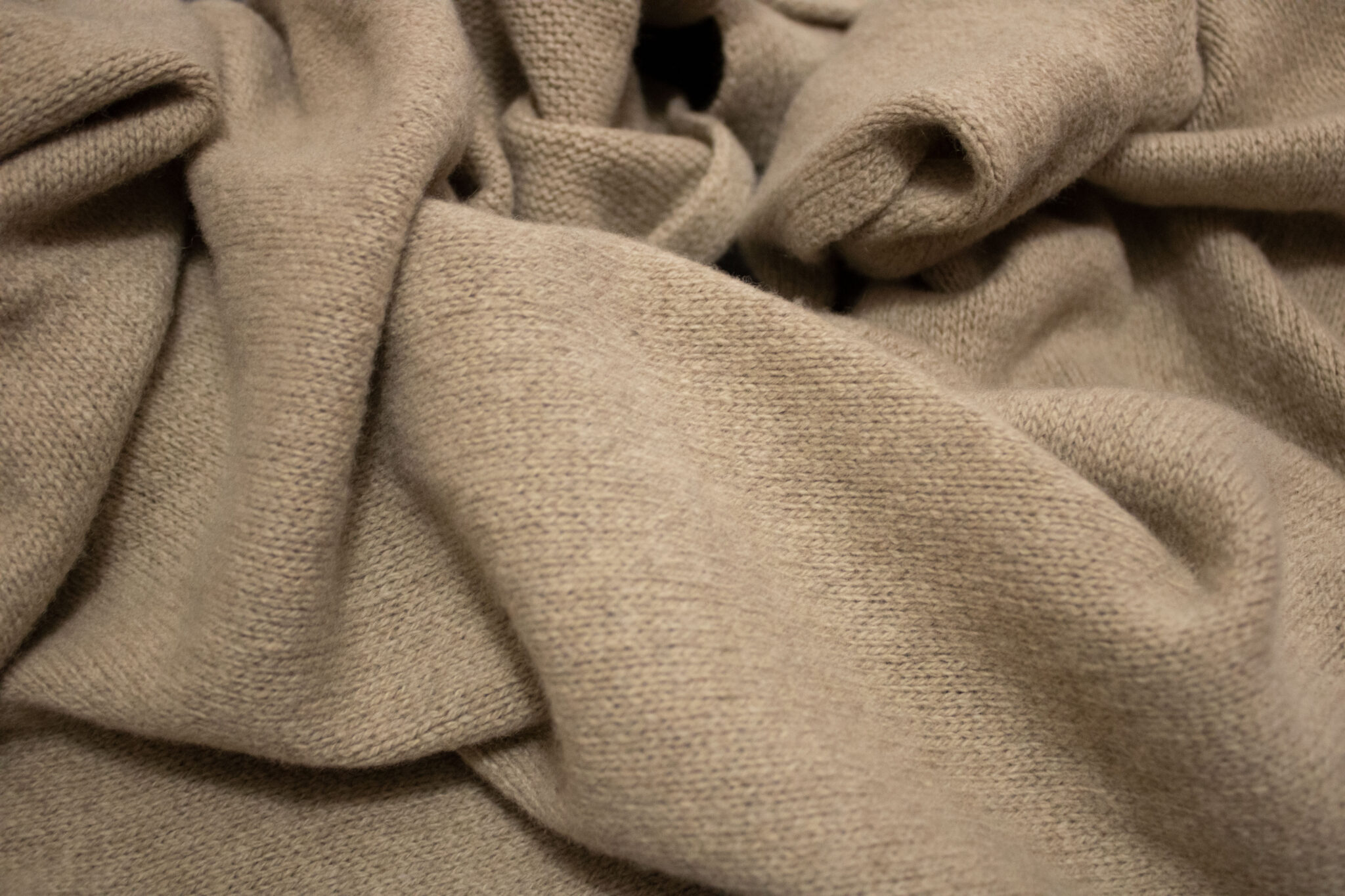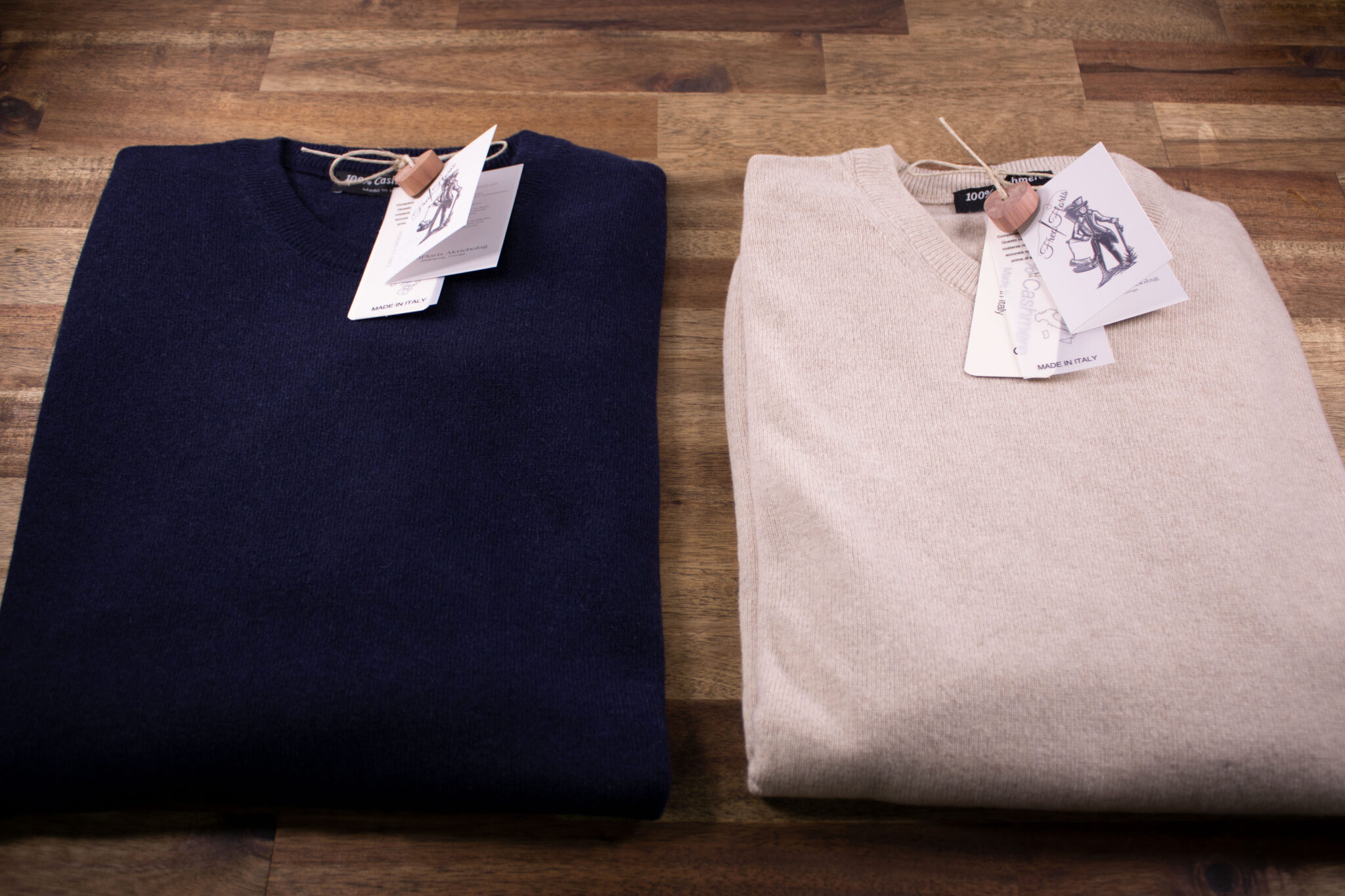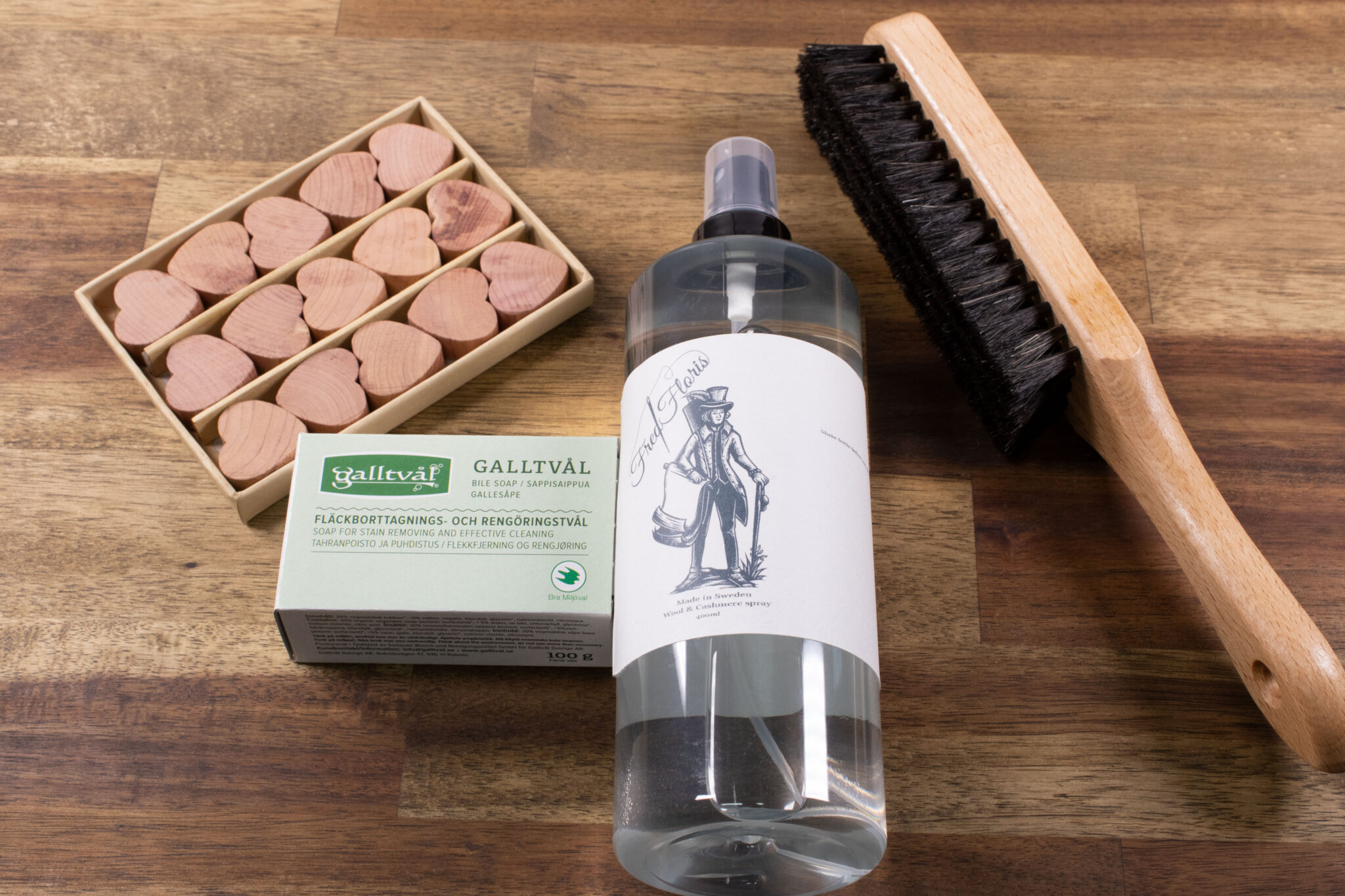By Kim Bui
In the modern world, we understand cashmere in an assortment of ways. As a garment that also works as an insulator during the winter months, cashmere has been dubbed the “golden fleece” or “king’s fiber”. Its warmth is enough to soothe the soft chills and feels sinfully soft brushed against your skin. Yet, cashmere garments also feel scratchy and uncomfortable. This fiber makes garments like jackets and sweaters, but it also makes home goods and accessories. The price point ranges anywhere from $40 to $2000 and the fiber itself comes in different forms. You have 100% all-natural, recycled all-natural, and even cashmere fibers mixed with other fibers. With a varying understanding of what cashmere is and is not, how do we make sense of this extraordinary fiber?

What is Cashmere and How is it Made?
Cashmere is one of the most complicated fibers to manufacture and produce. This is why it was also the most expensive and luxurious fabric out there. The creation of garments and items begins with the animal – the cashmere goat.
Cashmere goats roam the Asian Highlands such as Mongolia, China, Tibet, and Iran. In these regions when the temperature drops below -10°C, the winters are not only cold, but it is also extremely harsh. The cold weather makes it difficult for any animal to survive. However, cashmere goats are able to develop fur that acts as a thermo-regulating outer coat. Their coat protects them from the frigid winters and the extremely hot summers.
Stage #1: Gather
Throughout the year, the goats are free to roam on the hills until springtime when their coats begin to molt. This usually occurs between May and the beginning of summer. At this time, they will follow their herders down the hill for a once-a-year groom. Here, the wool is collected in small quantities. Herders and farmers collect the wool by hand, which involves the gentle brushing of the goat’s soft undercoat. The best part of the goat to collect the cashmere is from the underside. Here, consumers get the softest cloud-like garments or items. Leaving the top coat protects the goats from the wind, weather, and sun in the warmer weather. The alternative to combing the goat is to shear the goat. However, by shearing the goat, the final product is a rougher and low-quality garment or item because the hair used to create it is shorter.
Stage #2: Production
After the wool is gathered, it is then carefully picked through by hand to remove any dirt or impurities from the fiber. This stage also separates the long fibers from the short fibers and differentiates them into different grades. Once cleaned, the fiber is dyed to its desired color. The carding machine detangles and combs the hair into thin sheets known as rovings using individual wool fibers. The carded fibers are then fed into a spinning machine that twists the wool fibers giving the garments, or items, their strength, and then formed into bales of yarn. Manufacturers also control the thickness of the yarn at this time — depending on the textile product being produced.
The process of producing cashmere yarn has stayed relatively the same since the 18th century, making the production of garments and items incredibly labor-intensive. The incorporation of machines in modern production defines the difference between the process in the 18th century and now.
Why is Cashmere Expensive?
With cashmere prices ranging anywhere from $40 to $1,200, there is an ongoing debate about what makes this fiber luxe, and whether the high price points of some garments and items are justified. While the confusion creates controversy in the fashion world, the reasonings are simple. The grade, how many goats it took to create the garment, and finally, where and how it was made.
Different Cashmere Grades
The grade is an important factor in determining the price tag of the garment because, naturally, different grades produce different qualities. The length and diameter of the fibers also determine the price tag of the garment because the finer and longer the fiber, the higher the grade.
- Grade C cashmere is the roughest and cheapest grade of cashmere wool to be produced. This type of cashmere is usually reserved for outerwear, or for products that do not make contact with the skin.
- Grade B cashmere will have that initial rough feel but with some heavy washing, the fibers will begin breaking down the roughness to produce a soft feel. But, on the flip side of Grade B cashmere garments, because you require heavy washing to make the garment imitate high-quality cashmere, that also means more pilling, and faster wear and tear. This mid-grade cashmere varies widely in price.
- Grade A cashmere is ideally around 40mm in length and 15 to 19 microns in diameter. The longer the length means the stronger the yarn. This grade of cashmere is the most expensive because it is most likely to last longer and become an heirloom piece.
The number of Goats Required to Create a Garment or Item
The second defining factor of a cashmere garment’s price point is how many goats it took to create the garment.
Cashmere goats have a pretty low wool yield, making the raw material quite rare. Each goat’s yearly production limit is around 4 ounces meaning, on average, it takes two goats to make one two-ply sweater and up to six goats for higher-quality garments made from thicker yarn.
Location of Where Cashmere is Created
How cashmere is sourced is one half of the “creating a cashmere garment” story, but the other half is the production process. Where the garments are made, and how it is made are key in determining the price of the item because it now has to include the cost of sampling, freight and import, duties, and labor charges into the equation as well.
Factories in China, while closely vetted and monitored for quality control and ethical labor practices, will still be able to produce garments at a cheaper price due to the lower cost of labor. The minimum wage per hour in China averages $2.65 USD/per hour which is drastically different from European factories like Italy and Scotland whose minimum wage per hour is $7.21 USD and $9.79 USD respectively.
Can Cashmere Be Environmentally Friendly?
Cashmere has endless claims to fame. It’s warm, breathable, incredibly soft, and equally luxe, but one claim that many people don’t know about is that it is far more ethical than other animal-derived products.
Recycled Fabric
There are many manufacturers in the fiber industry that produces garments using recycled cashmere only. There are two ways to create garments using recycled cashmere– pre-recycled or post-recycled.
Factories with excess waste pieces produce pre-recycled cashmere garments from fabrics, and fibers that are no longer in use. These are often small scrap pieces or pieces that are still usable but do not meet commercial standards.
Large companies that have excess old inventory supply the cashmere to manufacturers. This process is the post-consumer process, allowing for the creation of garments from repurposed inventory.
The Production Process
The process of creating cashmere items using recycled material is the same as creating the materials from scratch. The elimination of the dying process is the biggest difference between a recycled and a non-recycled item.
When old garments from industrial waste are ready to be recycled, they begin at the selection stage. Here manufacturers check for contaminants, stains, and dirt, and then categorized the items by colour. By doing so, the recycling process skips over the dyeing and coloring process which drastically cuts down on water consumption, consumption of coloring products, and consumption of chemical products.
At FredFloris we practice consumerism in an environmentally friendly manner and offer cashmere sweaters made of 100% post-consumer materials.

Long Wear
Cashmere items are lifetime-knitwear. A high-quality jumper made with long hair from a goat is an investment piece. This sweater will last a long time, however, the durability and quality of the item should not be an excuse to mistreat your garments. If you want long-lasting garments or items, you definitely need to take part in caring for them.
Cashmere care kits like the one we offer include all of your necessary items like a clothes hairbrush made from real horse hair to preserve the delicacy of the cashmere garments. But, care for your items is what guarantees that they will stay in beautiful condition so you can maximize the value that you invested.

To Wrap it Up
In recent years, cashmere has seen a rise in demand forcing companies to mass produce, therefore expanding the definition. How is it made? Is it luxe or is it cheap? Is it ethical or is it unethical? The answer depends on you and where you choose to spend your money. At FredFloris we only offer the best quality, and above all, ethically sustainable cashmere sweaters. From the conception of the product to the consumer, our company ensures that the health of the planet comes first. We ensure this practice by offering recycled cashmere products. The products are lifetime knits so you will get plenty of wear, and value out of your sweater.
Shop FredFloris’ recycled cashmere sweaters today.
